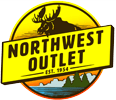From keen campers to backcountry backpackers, everyone knows how important a good night’s sleep is. It is essential for restoring your physical health after a long hard day, as well as restoring mental health and putting you in good spirits. The secret of being warm and comfy on your outdoor adventure lies in picking the right sleeping bag.
Camping sleeping bags are generally more geared towards comfort than the lightweight packing ability. That is why they are heavier and bulkier than backpacking sleeping bags, but they are often more affordable as well. However, even if you are car camping, it is still important that your sleeping gear doesn’t take up too much space. After all, the more you can bring with you to make your camping adventure comfortable and enjoyable, like chairs, lamps or stoves, the better. That is why our choice focuses on sleeping bags that will keep you warm and comfy at night, but also reduce weight in your pack.
The Top 6 Camping Sleeping Bags – NWO Picks
| The North Face Green Kazoo | Alps Blaze 20 | Eureka Kiewa | Nemo Sonic 0 | Rockbridge +25F | Coleman Kids 30 | |
|---|---|---|---|---|---|---|
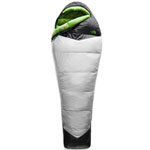 |
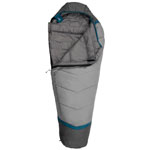 |
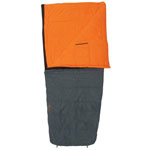 |
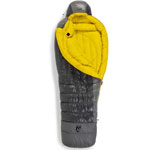 |
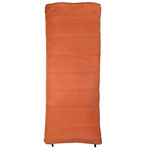 |
 |
|
| Temp Rating | +0F | +20F | +20F | +0F | +25F | +30F |
| Shape | Mummy | Mummy | Semi-Rectangular | Mummy | Rectangular | Mummy |
| Fill | 700 fill ProDown | Synthetic (TechLoft Silver) | Synthetic | 800 FP Down | Synthetic (TechLoft Silver) | Synthetic |
| Weight | 3 lbs 5 oz | 3 lbs 12 oz | 3 lbs 10 oz | 3 lbs | 4 lbs 12 oz | 3 lbs |
It is practically impossible to single out THE best sleeping bag when there is so much that needs to be taken into the account. Based on our experience and the experience of our customers we have made a selection of sleeping bags that we can personally recommend for sleeping in a camping tent or outside, based on several different criteria.
Before we move on with the reviews, here is a list of things you need to look at when purchasing the best camping bag:
- Shape – The shape of your sleeping bag depends on your style of camping. There are three main shapes: Mummy bags, Rectangular and Semi-Rectangular, or Tapered. In addition there are Double sleeping bags designed to accommodate two grown-ups inside comfortably.
- Temperature rating – Sleeping bag temperature ratings is supposed to represent the lowest temperature at which a sleeping bag can be used. However, the rating numbers and their real-world meaning can vary widely from one manufacturer to another, so it should be used as a general guideline, not as a rule.
- Fill / Insulation – Sleeping Bags are either filled with Down or with Synthetic insulation, each one has its own strengths and weaknesses.
- Weight and Packing – For camping bags, the weight is not the decisive factor, especially if you are car camping. However, if you are also backpacking and you plan to use one bag for both activities, choose a lighter backpacking style.
- Specialty features – Some bags have additional features that enhance their functions, like draft tubes and collars, sleeping pad loops and straps, or stretch panels.
1. The North Face Green Kazoo – Best Cold-Weather Sleeping Bag
The North Face is known for their tried-and-true camping gear, tested both in laboratories and on expeditions around the world. They have an excellent range of sleeping bags for cold and warm weather, and one of our favorites is the Green Kazoo.
Full Specs:
- Shape: Mummy
- Temp Rating: 0° (15F Comfort; 1F Limit; -38F Extreme)
- Insulation Fill: 700 fill ProDown
- Shell Fabric: 20D Nylon Ripstop
- Liner Fabric: 20D Nylon Taffeta
- Weight: 3 lbs 15 oz (Regular)
- Length: 71.5″ (Regular)
- Width: Shoulder 61″; Hip 59″; Foot 41″
- Stuffsack Size: 10″ x 19″
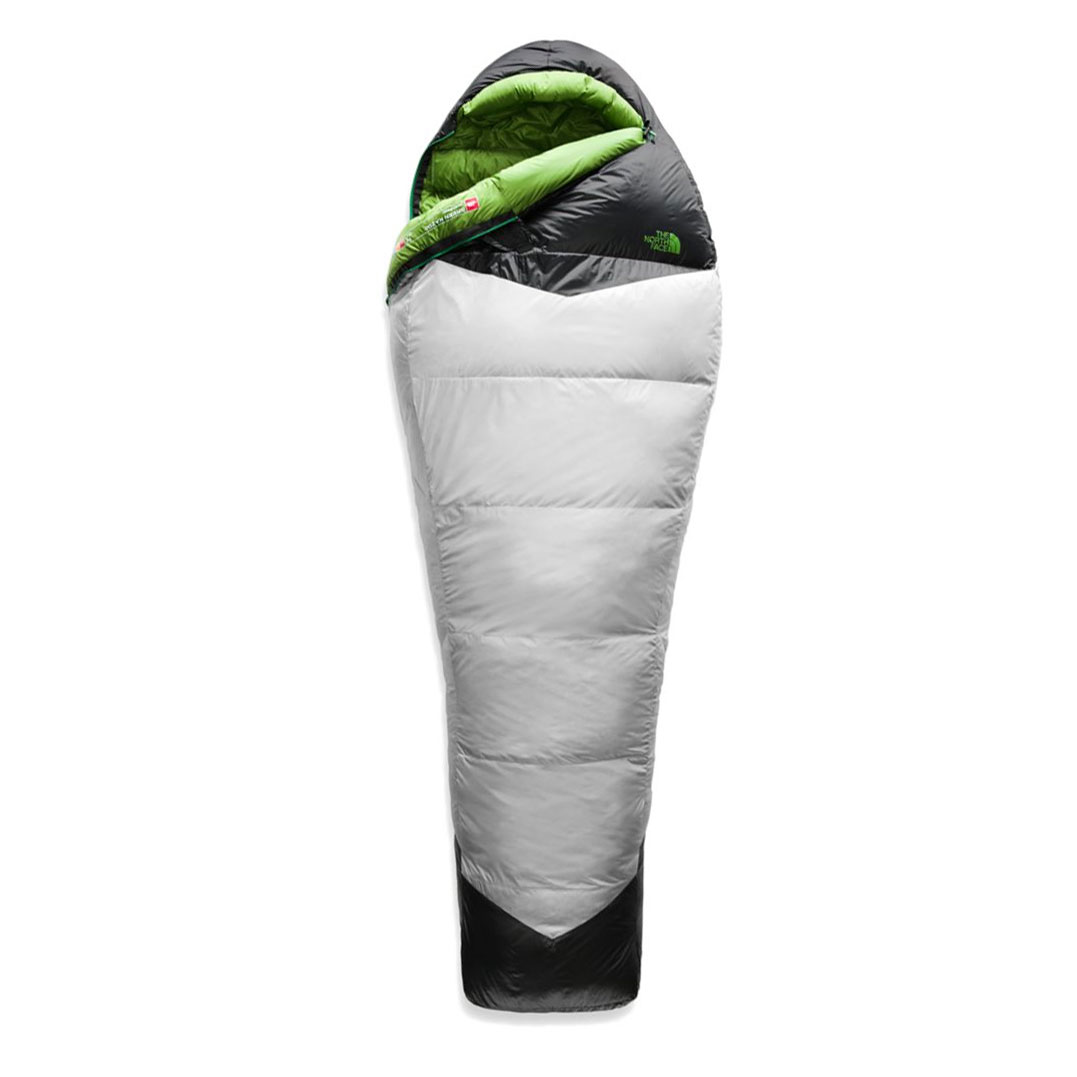
The Green Kazoo is a good classic 0 degree sleeping bag, insulated with water-resistant 700 fill power down, which makes for the perfect balance of cost and weight and space savings. The mummy shape, with a well-stuffed fitted hood, is perfect for keeping you snuggled and toasty, and a beefy draft collar that runs 360 degrees around keeps the warm air inside even if you move around.
It feels pretty spacious in the shoulder and chest area, though a bit tight around the thighs, as reported by side sleepers. The bag features an oversized vaulted foot box, and a small chest pocket along the draft tube.
A stiffened piece of black fabric tape running along both sides of the zipper is designed to prevent the zipper from getting stuck in the shell fabric, but it is not too effective, so you still have to be careful when zipping up. The bag features a double zipper, which is a really nice feature on a 0-degree bag because it lets you adjust and vent your feet, waist, or torso if you use the bag in warmer temperatures.
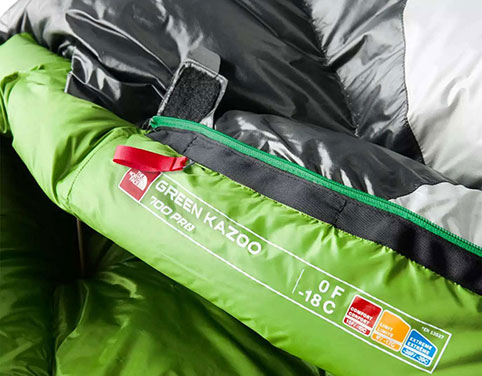
The North Face Green Kazoo is a good value when compared to other significantly more expensive cold-weather sleeping bags. It comes with a compression sack and storage sack, and the compression-optimized fill accounts for a smaller packed size, making the bag 10% more compressible. There is also a women’s version of the Green Kazoo, which is rated for 5 degrees.
2. Alps Blaze Lake +20F – Best 3 Season Bag
Alps Mountaineering is a company known for some very high-end camping gear, including sleeping bags that offer superior quality, warmth-to-weight ratio, insulation and compressibility that many others. On the other hand, they do come with the price that is often not acceptable for occasional family camping trips.
Full Specs:
- Shape: Mummy
- Temp Rating: 20°
- Insulation Fill: TechLoft Silver insulation
- Shell Fabric: Polyester Ripstop
- Liner Fabric: Polyester
- Weight: 3 lbs 12 oz
- Length: 80” (Regular)
- Width: 32” (Regular)
- Stuffsack Size: 11″ x 20″
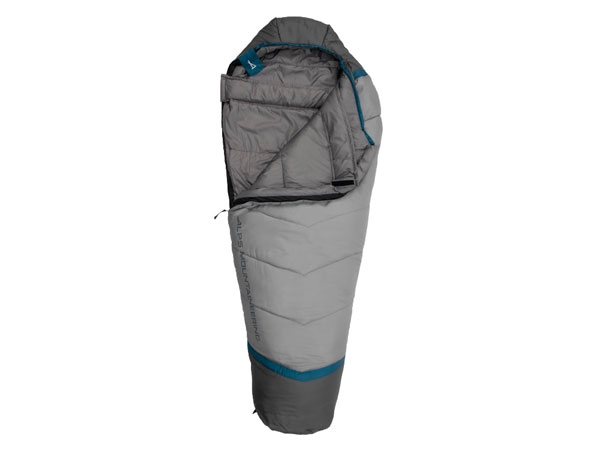
That is why Alps came through, being one of the top outdoor companies, and created a line of sleeping bags that are affordable but maintain the signature quality. Alps Blaze is one of those sleeping bags. Constructed with a durable, polyester ripstop shell with a soft, polyester liner, Alps Blaze is durable, comfortable and waterproof. The TechLoft Silver synthetic insulation consists of multiple denier staple-length fibers that have a siliconized finish for maximum insulation, loft, and compactness.
Two-layer off-set construction features a contoured hood and mummy shape, helping to seal in your warmth. There is also an insulated chest and zipper baffle for added heat retention.
The temperature rating is 20 degrees, and we found that this bag will in fact keep you warm in these temperatures, if you are not too cold of a sleeper.
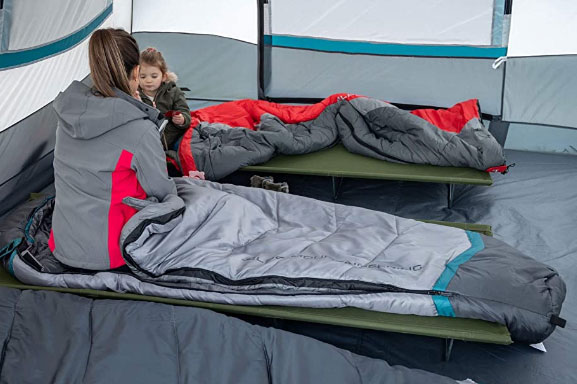
The Alps Blaze comes in two sizes: Regular (32″ x 80″) with a stuff sack size 11″ x 18″, and XL (36″ x 86″) with the stuff sack size of 11″ x 20″. This is a great bag for the price, but considering it is decently bulky and heavy it is much more suited for campsite that for backpackers.
3. Eureka Kiewa 20 – Top Big and Tall Sleeping Bag
Being tall makes find the right outdoor gear a challenge, and those who are bigger than an average person often find mummy bags to be to constricting. The well known outdoor gear brand Eureka boast their own sleeping bag for big guys Eureka Kiewa, which is wide, comfortable and warm. The long version of this sleeping bag, featuring the roomy 3D foot box, accommodates a person up to 6’ 6”. The tapered rectangular shape offers plenty of room, yet it packs down to a compact size.
Full Specs:
- Shape: Semi-Rectangular
- Temp Rating: 20°
- Insulation Fill: Eureka! Synthesis synthetic fibers blend
- Shell Fabric: 40D/290T Polyester Taffeta
- Liner Fabric: 50D/300T Peached Polyester
- Weight: 3 lbs 10 oz
- Length: 78″
- Width: 33″
- Stuffsack Size: 9.5″ x 18″

The insulation of the Eureka Kiewa sleeping bag is a proprietary blend of synthetic fibers, called Eureka! Synthesis technical insulation, engineered to optimize thermal performance, but also be lightweight, compressible, and resilient. The lining is made of comfortable, warm-to-touch peached polyester.
Though it is rated to keep you warm in below freezing temperatures, it tends to run a bit cold, so we recommend adding a fleece liner if you’ll be camping in colder seasons.
Eureka Kiewa features a full length zipper, so you can unzip it all the way and use it as a quilt. This bag comes with a compression stuff sack, but some of our customer were not content with its quality. This should not be a problem, as there are plenty of compression sacks that are excellent and affordable as well.
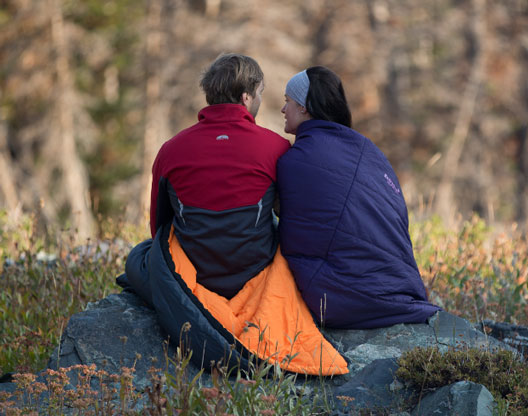
Although this is not the biggest sleeping bag available, it deserves a place on this list as it is very difficult to find a bag that is spacious but also lightweight and compact, comfortable and warm, high quality but affordable. And Eureka Kiewa ticks all the boxes.
4. Nemo Sonic 0 – Down Sleeping Bag
Nemo Sonic 0 Sleeping bag is a cold-weather sleeping bag that you can comfortably use even in warmer weather thanks to the couple of features that greatly expand the comfort zone of its temperature rating. This is a classic mummy bag, but it includes stretch construction at the knee level, as well as wider foot box, which allows side sleeping and makes the bag less restrictive.
Full Specs:
- Shape: Mummy
- Temp Rating: 0F
- Insulation Fill: 800 FP Down
- Shell Fabric: 20D Nylon Ripstop w/ DWR
- Liner Fabric: 30D Nylon Taffeta w/ DWR
- Weight: 3 lbs
- Length: 78″ (Regular)
- Width: Shoulder 61″; Hip 58″; Foot 53″
- Stuffsack Size: 15.5″ x 8″

The bag is insulated with PFC-free, responsible down standard certified, 800 fill power hydrophobic down. The outer shell is 20 denier ripstop-nylon, treated with a DWR coating as moisture protection. The foot box is made from Nemo’s Osmo waterproof breathable fabric, which is a welcome innovation, as the foot box is usually the first to get damp if it rubs against the walls of your tent.
To protect warm air from exiting, or cold air from creeping in, the bag features a draft collar with Velcro closure and two draft tubes on the zipper. It also has a countered hood with a drawstring that allows you to tighten it up in cold weather to improve heat retention.
Nemo Sonic features integrated “gill” vents that come in handy when the temperature rises. The two zippered opening on the front are positioned to release heat effectively from your core.

Nemo Sonic sleeping bags come in both regular and long size, they feature top of the line materials, and innovative design features. It also comes with a stuff sack and a great compression sack, making Nemo Sonic a complete package. It is one of the more expensive sleeping bags, so it might not be the right choice if you are camping just for fun, but if you feel like going on adventures and mountaineering expeditions, this kind of bag is worth taking a look at.
5. Alps Rockbridge +25F – Best Budget Option
Cedar Ridge is a brand under the Alps Mountaineering umbrella, developed to fill a void in the market for family-friendly gear at the price point acceptable for beginners. The Cedar Ridge line of products include easy-to-use tents, sleeping pads and bags.
Full Specs:
- Shape: Rectangular
- Temp Rating: 25°
- Insulation Fill: Synthetic hollow-fiber insulation
- Shell Fabric: 190T polyester
- Liner Fabric: 190T polyester
- Weight: 4 lbs 12 oz
- Length: 78”
- Width: 33”
- Stuffsack Size: 5″ x 20″
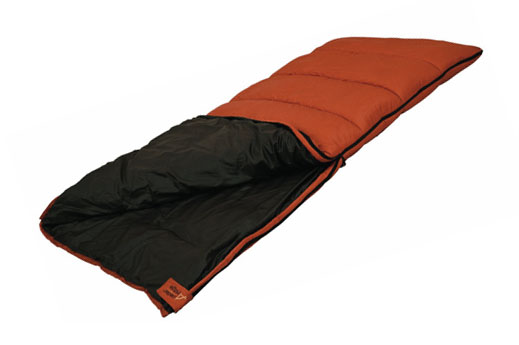
The Rockbridge is a classic rectangle sleeping bag with two-layer construction, rated at 25°. Both the outer shell and the liner are made of 190T polyester material, which is very durable and easy to maintain. A hollow-fiber synthetic insulation will keep you warm in near freezing temperatures.
The bag is very roomy and rectangular shape allows for a lot of movement and various sleeping positions. The zipper allows you to zip multiple bags together so you can get one very large blanket. It comes with a standard stuff sack, and what’s most important it, at under $60, the price is incredibly low for the level of quality this bag offers.
6. Coleman Kids 30 – Top Kids’ Camping Bag
Coleman is known for quality and durable camping equipment, and this mummy style kids’ sleeping bag is no exception. Not only is it beautifully designed, it is constructed with lightweight Coletherm, hollow polyester insulation to keep your little one warm in temperatures as low as 30°F, though we would recommend using it above 40F.
Full Specs:
- Shape: Mummy
- Temp Rating: 30°
- Insulation Fill: Coletherm® hollow polyester
- Shell Fabric: Polyester Taffeta.
- Liner Fabric: Polyester Taffeta.
- Weight: 3 lbs
- Length: 66”
- Width: 26”
- Stuffsack Size: /
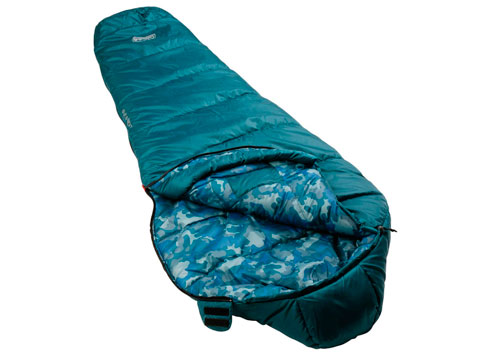
Many sleeping bags for kids that can be found in department stores are not the best choice for camping. They are very colorful and feature all kinds of cartoon characters, but they are only suitable for sleepovers at a friend’s house, not for sleeping in a tent.
The Coleman Blue Bandit is small and compact but with a decent quality weather rating for early and late season adventures. It is also very easy to maintain, it can be machine washed and dried. It fits kids up to five feet tall, so it can be used for many years until your child is ready to upgrade to an adult-sized sleeping bag.
What to Look for in a Camping Sleeping Bag
Shape
In general, a sleeping bag for camping should offer enough room to stretch and roll over, so rectangle shape is common choice. However some campers might like the more snug fit, or want a bag that can fit into a backpack, and there are plenty of tapered or mummy bags suitable for family camping. The shape of the camping bag is a matter of preference.
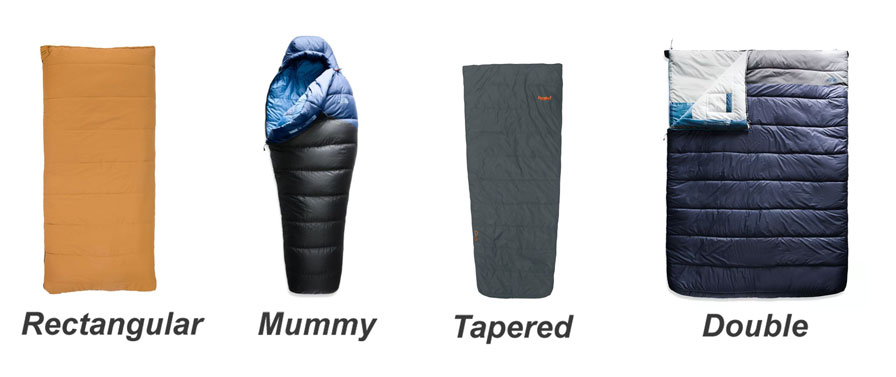
Rectangular – This is a classic shape most of us are familiar with. It is great for family camping, car camping and anyone who wants a lot of room to spread out and be comfortable. These are really great multi-use sleeping bags, they can be spread open and used as a blanket and are generally a great low-cost option for family campers. The down side is that rectangle bags tend to be on the heavier side and not as compressible as other options.
Mummy – This type of bag is wider around the shoulder and tapers in to the feet, and it also features a hood that can be cinched. The Mummy shaped bag is a golden standard for backpackers as it’s taking out all of the extra fabric and fill, and it fits snuggly around your body for the maximum heat retention.
Semi-rectangular – Also known as tapered, or barrel shape, this is a happy medium between the two previous ones. They have a wider shoulder area and – tapered footbox to decrease some of the excess air in rectangular bags, but they also provide enough space to move around in a bag and change positions throughout the night.
Double – If you want to go all out and feel as roomy as possible, or you’re looking to snuggle up together on your next camping trip, a double sleeping bag, designed for two people, is a perfect choice.
Size
When choosing the length of your sleeping bag, apply the Goldilocks principle; if the bag that is too short you will be compressing the insulation with your feet, making it less effective, but if the bag is too long, there is too much room that needs to heat up. However, you may consider getting a longer sleeping bag if you plan to use the footbox to store gear that needs to be kept warm, like electronics.
Most men’s sleeping bags come in two sizes: Regular, that fits a person up to 6 feet, and Long, that fits a person up to 6’6”. Some manufacturers also have size Short, for the height up to 5’6”. Women’s bags come in Regular and Long sizes as well. The regular-sized sleeping bag fits people up to 5’ 4” in height, while a long-sized sleeping bags give enough space to people up to 5’10” tall.
Insulation
There are two types of sleeping bag insulation – goose down and synthetic. Which one is better is the age-old question among backpackers and campers, and it seems like there is no right answer. It depends entirely on where you plan to camp, what temperatures you’ll be camping in, and how you’ll be getting there.
Down Fill is natural insulation made of goose down, often treated for better resisting moisture. It packs down smaller when compared to a synthetic sleeping bag rated to the same temperature. Down sleeping bags are usually labelled with “fill rating”. This is telling how much goose down is put in the bag, and the higher the number, the more insulation there is. Most three-season sleeping bags have a “fill rating” of at least 600, while four-season bags, those designed for true sub-zero weather use, have a fill rating of around 900 – 1000.
Synthetic Insulation is created in lab. It consists of various materials and there are numerous types, with every major camping gear manufacturer having their own proprietary technology. Synthetic sleeping bags are constantly getting improved, and today there is no much weight/bulk differences between a quality goose down bag and a quality synthetic one. Another benefit of the synthetic fill is that it keeps its insulating properties even when it’s wet. Also synthetic sleeping bags can be cleaned simply by tossing them into a large, commercial sized front load washing machine, which you can’t even think about when it comes to down sleeping bags.
Sleeping Bag Fabric
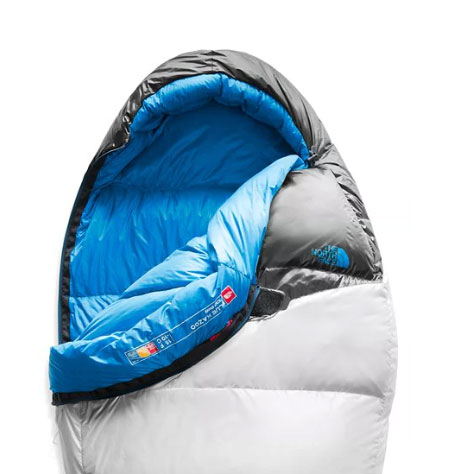
Insulation is the soul of the sleeping bag, but in order to choose the right sleeping bag for the conditions, you need to understand materials that the bag is made of. The outer shell is usually made of Ripstop nylon or polyester, which is reinforced and more resistant to both tears and moisture thanks to the heavier threads woven into the material. Cheaper models, may be made of nylon, polyester and taffeta, which are low cost and breathable, and they are often treated for water-repellency. These are no waterproof, and they are best for car camping or general walk-in camping. Materials such as DryClime, Microfiber or Gossamer Micro, are tightly woven, strong and water resistant, though softer than Ripstop.
The lining of a sleeping bag can be made of cotton or cotton flannel, which is natural, breathable and easy to clean and repair, but it traps moisture, so it’s reserved for car camping or campouts in dry environments. Nylon, polyester or taffeta are the most popular lining fabrics, as they are breathable and comfortable, but also reduce moisture absorption.
Temperature Rating
Temperature rating of your sleeping bag is a major consideration for staying warm. Keep in mind that the source of heat in your sleeping bag is you, so if the bag is too big, or too long, you may sleep colder than the actual rating for the bag. Most of the bags have a temperature rating. Some just have a flat 20 degree, or 15 degree rating, while others have the EN 13537 rating. The EN rating includes the following guidelines:
- Upper Limit – temperature at which an adult man would have a comfortable sleep without sweating. If the temperature rises above, the bag will become too hot.
- Comfort Limit – a rating for women, the temperature at which an adult woman can sleep comfortably in a relaxed position.
- Lower Limit – a rating for men, the temperature rating at which a standard male can sleep for eight hours in a curled position without walking.
- Extreme – This is a temperature rating at which a standard female can remain for six hours without the risk of death from hypothermia. However, this is an extreme survival rating only. It is also regarded as the emergency-last-resort-temperature.
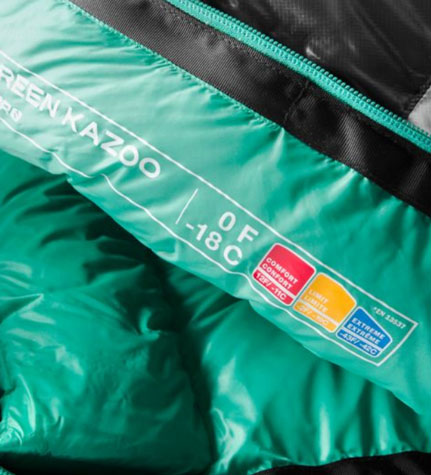
These temperature ratings are a good place to start, but they are not a given. There is lots of other variables to consider when choosing a sleeping bag. The first one to consider is your sleeping pad, which also has its own temperature rating, called the R-value. The higher the R-value, the higher the thermo-efficiency is, which means it is going to insulate you better from the cold ground. It is also very important whether you sleep in a tent, and what kind of tent it is.
The next thing to think about is your metabolism. Some people sleep colder that the others, which means they will probably need a bag with the lower temperature rating to keep the desired level of comfort. Another thing to consider is the amount of clothing that you are wearing.
Have in mind that once you have purchased a sleeping bag, you need to learn, through trial and error, what additional layers you need to sleep comfortably at various ambient temperatures.
Season Rating
Unlike the temperature rating, sleeping bag season ratings are actually quite simple to understand. There are 1,2,3,4 or 5 season ratings and this refers to the minimum temperatures in which the bag can comfortably be used, or the ‘comfort rating’.
- One season sleeping bags are the lowest end of the scale. These bags are generally used indoors or in tropical climates. They are very small and lightweight as they don’t contain much insulation or filling.
- Two-season sleeping bags are the base minimum for most campers and are sometimes known as summer bags. If you are a warm sleeper, you may be able to use a two-season bag for the latter end of spring and the early part of autumn as well as in the summer.
- Three-season sleeping bags are the most common choice for experienced campers. Suitable for all but winter camping these sleeping bags are designed to keep you comfortable in temperatures down to round 0-5 degrees but please check this before as this can differ between brands and models.
- Four-season sleeping bags are designed for those who will be camping all year round or are likely to be in harsher environments such as camping at altitude in the mountains. Temperature range for four-season bags is around 0 to -10 degrees.
- Five-season sleeping bags are not really designed for the general market but for expeditions and use in cold and extreme conditions, as they are suitable for temperatures down as low as -40 degrees.
Portability
The best sleeping bag for car camping is not the most lightweight or the most compact one. If you camping trip revolves mostly around your campsite, comfort is the king, so you don’t really have to look at the size of the stuff sack or consider every pound. However, many campers do like the idea of a sleeping bag that can pull a double duty on the occasional backpacking trip, so it is not unreasonable to look at the weight and the compactness of the bag when looking for the best sleeping bag for you. Alternatively, you can check out hammock tents, as one of the most lightweight and backpack-friendly sleeping arrangement.
Specialty backpacking bags can weigh under 2 pounds, and they can pack to 6” x 10” but they are also pretty expensive. The models that are more suitable for camping are usually around 2 lbs 6 oz to little over 3 lbs for mummy bags, and up to 5 lbs for rectangle bags. Of course, even if you are family camping and travelling in a camper, you still don’t want to carry anything to take up too much space. Most modern sleeping bags can be packed down to a decently small size though, and allow you to find that perfect combination of offering plenty of sleeping space, but being compact for packing.
As you could probably see from this lengthy post, choosing the best sleeping bags for camping is a challenge, especially if you are a beginner. Whether you are just planning to go on a family camping adventure for a first time, or you are experienced tent sleeper, browse through our selection of sleeping bags by the best brands in the industry. Feel free to contact us anytime, we would be more than happy to help you make your nights in the great outdoors as comfortable as possible.
